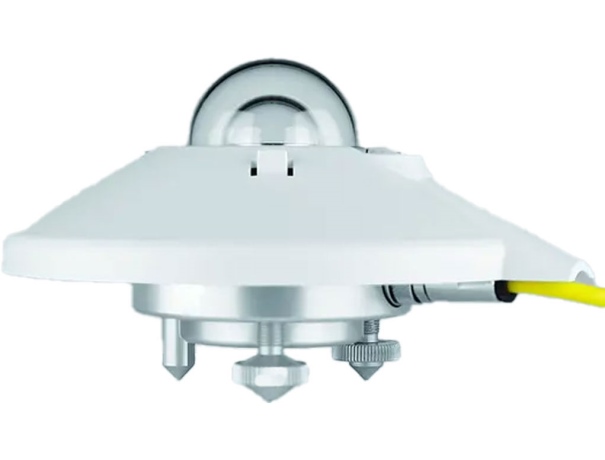A pyranometer is a sensor designed to measure solar radiation flux density. It provides valuable data on the amount of solar energy reaching a specific surface area over a defined period. This information is vital for understanding climate patterns, optimizing solar energy systems, and assessing environmental impacts.
What is pyranometer
A pyranometer is a specialized instrument used to measure the global solar radiation received from the entire hemisphere above within a wavelength range typically from 0.3 to 3 micrometers.
How Pyranometers Work -Overall
Pyranometers operate based on the principle of converting incoming solar radiation into a measurable electrical signal. This signal is proportional to the solar irradiance incident on the sensor's surface.
Working Principle -Overall
Pyranometers operate based on the principle of converting solar radiation into a measurable electrical signal. The most common method involves using a thermopile sensor, which generates a voltage proportional to the temperature difference between its blackened surface and the sensor body.
Applications of Pyranometers
Pyranometers find applications across various fields, including:
Meteorology and Climate Studies
Meteorologists use pyranometers to monitor solar radiation patterns and understand climate dynamics.
Solar Energy Systems
Pyranometers are crucial for assessing the performance and efficiency of solar energy systems, aiding in their optimization and maintenance.
Agriculture and Horticulture
In agriculture, pyranometers help determine optimal growing conditions by measuring solar radiation levels, influencing plant growth and development.
Selecting the Right Pyranometer
Factors to Consider
When choosing a pyranometer, factors such as accuracy, spectral sensitivity, and durability should be considered. Additionally, compatibility with data acquisition systems is essential for seamless integration.
Interpreting Pyranometer Data
Solar Radiation Measurements
Pyranometer data can be analyzed to understand solar radiation patterns, including direct, diffuse, and total irradiance.
Data Analysis Techniques
Advanced data analysis techniques, such as time series analysis and spectral decomposition, help extract valuable insights from pyranometer data.

Maintenance of Pyranometers
Regular Cleaning: Dust, dirt, and bird droppings can accumulate on the sensor's surface, affecting its accuracy. Clean the dome or sensor regularly with a soft cloth and mild detergent. Avoid using abrasive materials that could scratch the surface.
Calibration: Periodically calibrate the pyranometer according to the manufacturer's recommendations. Calibration ensures that the sensor provides accurate readings. Some pyranometers may need to be sent to the manufacturer or a specialized lab for calibration.
Inspection: Conduct visual inspections of the pyranometer to check for any physical damage, cracks, or discoloration of the dome. Also, ensure that the sensor is mounted correctly and securely.
Environmental Conditions: Ensure the pyranometer is operating in suitable environmental conditions as specified by the manufacturer. Extreme temperatures, humidity, and corrosive environments can affect its performance and lifespan.
Electrical Connections: Check and maintain the electrical connections regularly. Ensure that the cables are in good condition and properly connected to avoid any signal loss or interference.
Data Logging: Verify the data logging system to ensure it is recording data correctly. Check for any discrepancies or gaps in the recorded data.
Desiccant Replacement: If the pyranometer is equipped with desiccants to prevent moisture accumulation, replace them as needed. Moisture can affect the sensor's performance and lead to inaccurate readings.
Firmware Updates: If the pyranometer has a digital interface, ensure that its firmware is up-to-date. Firmware updates can improve performance and add new features.
Documentation: Keep detailed records of all maintenance activities, including cleaning, inspections, calibrations, and any repairs. This documentation is helpful for tracking the pyranometer’s performance over time and planning future maintenance activities.